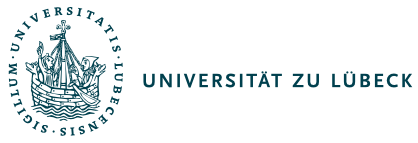Duration:
1 Semester | Turnus of offer:
each winter semester | Credit points:
3 |
Course of studies, specific field and terms: - Master CLS 2023 (Module part of a compulsory module), MML with specialization in Life Science, 3rd semester
- Master Infection Biology 2018 (Module part of a compulsory module), Infection Biology, 1st semester
- Master Infection Biology 2012 (Module part of a compulsory module), Infection Biology, 1st semester
- Master Biophysics 2019 (Module part of a compulsory module), biophysics, 1st semester
- Master CLS 2016 (Module part of a compulsory module), MML with specialization in Life Science, 3rd semester
- Master MLS 2018 (Module part of a compulsory module), life sciences, 1st semester
- Master MLS 2016 (Module part of a compulsory module), life sciences, 1st semester
|
Classes and lectures: - LS4021-V: Crystallography (lecture, 2 SWS)
| Workload: - 30 Hours in-classroom work
- 60 Hours private studies
| |
Contents of teaching: | - Crystal growth, precipitant and phase diagram, crystal morphology, symmetry and space groups, crystallogenesis
- X-rays, X-ray sources, X-ray diffraction, Bragg's law, reciprocal lattice and Ewald-sphere construction
- X-ray diffraction by electrons, Fourier analysis and synthesis
- Protein structure determination by X-ray diffraction, crystallographic phase problem, Patterson map, molecular replacement (MR), multiple isomorphous replacement (MIR), multi-wavelength anomalous diffraction (MAD)
- Crystallography and the drug discovery process: studying protein-ligand interactions
- Practical exercises employing an X-ray generator (collection of a diffraction image) and the computer (MR; calculation and interpretation of electron density maps)
- Site visit at the Synchrotron DESY (Hamburg)
| |
Qualification-goals/Competencies: - They have a general scientific competence in macromolecular X-ray diffraction analysis
- They have the methodological competence to grow protein crystals by hanging or sitting drops
- They have the methodological competence to correctly interpret (salt or protein) the diffraction image of a crystal using the Ewald Sphere construction
- They have the methodological competence to tackle the phase problem either by MR, MIR or MAD
- They can calculate and interprete electron density maps
- They have the methodological competence, to apply structure- or fragment-based techniques for lead compound identification
- They have the communication competency to convey the principles of X-ray diffraction theory
|
Grading through: |
Responsible for this module: Teachers: - Dr. math. et dis. nat. Jeroen Mesters
|
Literature: - Jan Drenth: Principles of Protein X-ray Crystallography - Science+Business Media, LLC, New York
|
Language: |
Notes:Is part of Module:
- LS4021-KP06 (former LS4020-IB) -> Prof. Hübner
- LS4020-KP06 (former LS4020-MLS) and LS4020-KP12 -> Prof. Peters
- LS4026-KP06 start in 2023
4 exercises, 2 hours each, are offered in addition to the lecture. Dates are given at the start of the semester.
It is a compulsory module part for the Master MLS with a focus on structural biology. |
Letzte Änderung: 17.2.2022 |



















für die Ukraine